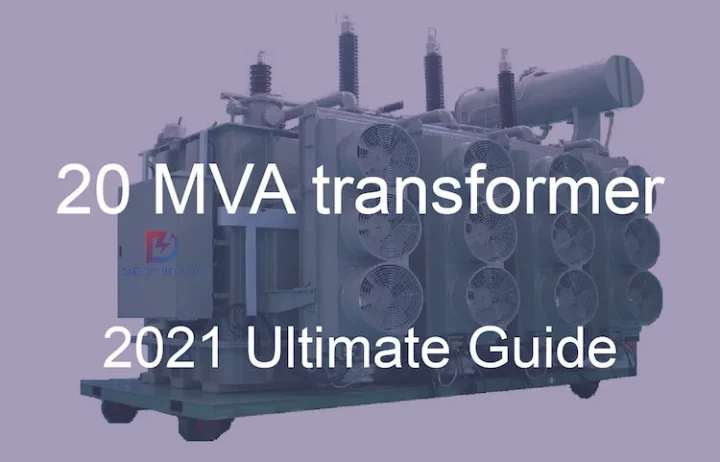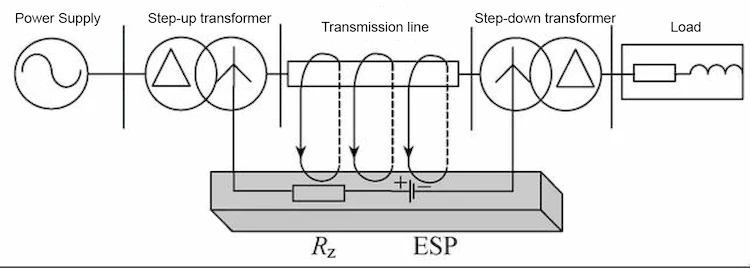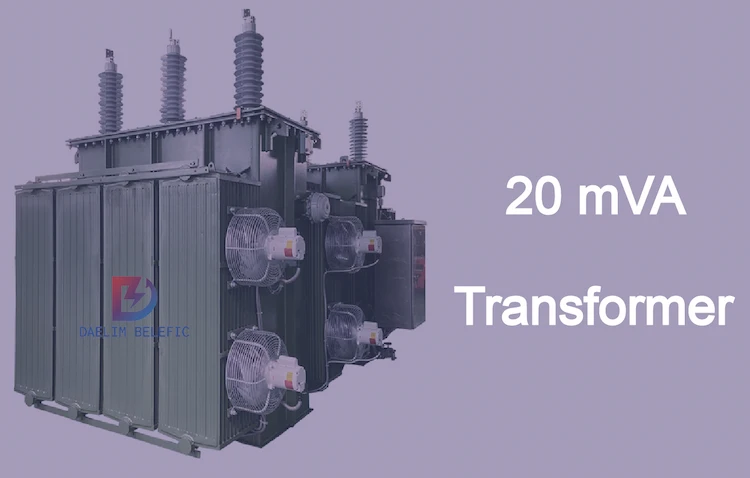ELECTRIC, WITH AN EDGE
When it comes to purchasing transformers, you might have heard about 20 MVA transformers because of their popularity.
But how good is their performance?
You will get to learn everything about them along with the 20 MVA transformer specification, 20 MVA transformer price, 16/20 MVA transformer price, and as well as other variations.
With the help of DAELIM, an electrical company that has been manufacturing 20 MVA transformers for many years, you will be able to understand how this type of transformer works, which is very important when making a wise purchase decision.
For starters, before diving into the 20 MVA transformer specification and 20 MVA transformer price, it is crucial to start learning about the basics or fundamentals first so that you won’t be confused about the terminologies.

Ultimate 100 mVA Transformer Guide
-In our modern age today, we find electronics everywhere. This article will discuss the 100 mVA Transformer. What is it for?
1 MVA Three-phase Pad-Mounted transformer 250mva 220kv
-If you’re looking for a professional 1 MVA Three-phase Pad-Mounted Transformer and Power, Daelim can be your best supplier.
9+FAQ ABOUT THE 15 MVA TRANSFORMERS
-15 MVA Power Transformer is a breakthrough in the transformer market as it will save you money and energy. Read more.
14+FAQ ABOUT THE PAD MOUNTED TRANSFORMER
-FIND THE BEST PAD-MOUNTED TRANSFORMER GUIDE ON THE WEB ALL IN ONE PLACE. SEE OUR LIST OF 14+FAQ RIGHT HERE.
To begin with, you might be wondering what is the meaning of M.V.A? M.V.A basically means Megavolt amperes.
It is considered a measuring unit for apparent power.
This goes to show that the power will be associated with the current and voltage of a particular circuit.
When it comes to the terminologies that are in the description of total electrical power in an installation, this will require both true and reactive power towards the circuit.
Furthermore, the typical rating of this is commonly used by electrical companies during installations like transformers, substations, and other electrical devices.
M.V.A are primarily calculated with the help of other measuring units such as kVA or kilovolt amperes.
Basically, 1000 kVA is equivalent to 1 MVA. In terms of the installation of 20 MVA transformers, professionals will inspect the capacity of the substation first before proceeding for safety purposes.
This is to ensure a safe installation, which requires compatible MVA power capabilities.
In addition to that, the megavolt ampere measuring unit is also used as a basis for measuring the amount of electricity that a house or multiple buildings require.
This means that it should match the MVA power capacity at the substation.
In terms of different power transformers that come with different power ratings, engineers will start to inspect the suitability or compatibility of the power transformers for the reason of obtaining a match in the power transmission from the substation to industries and households.
Matching the MVA power capacity in the transformers with the substation reduction power loss will most likely put the power stable or well-controlled.
To prevent accidents from occurring during power surges, it is vital that the power must be balanced.
Now that you know what is M.V.A power, it is the best time to learn what are 20 MVA transformers all about. 20 MVA or 20 Megavolt ampere is the rating of the transformer.
There are basically two types of rating that start with the letter M, which is the MVA and MW.
MW is the power factor that is considered during manufacturing.
So, to find out or search the power that is able to provide the transformer will multiply the power factor with the rating.
This means that the 20 MVA transformer is able to supply a power of 16 MW (if taken 0.8 as the power factor.)
In terms of the 20 MVA transformer specification, it can be adjustable, modified, or tweaked, depending on your preference, For standard ratings and the average 20 MVA transformer price, this is option is the most common one.
Moreover, 20 MVA transformers are specifically designed to be compatible with a single-phase configuration and as well as a three-phase one.
During your search for a 20 MVA transformer, there are many elements that you should consider first before making a purchase decision.
This includes the maximum power rating, current rating, voltage rating, and several other elements that are essential to inspect before buying a 20 MVA transformer.

When it comes to the 20 MVA transformer’s design or structure, it is basically designed in a metal housing with covered sheets as well.
The categories of these can be identified as either a shell-type or core-type.
For its structure, the most common form of it would be connected with wire to create that single-phase configuration or three-phase configuration.
The configuration of three-phase transformers can be three single-phase transformers together.
However, these must be separated or isolated from excess parts for the purpose of better or continuous performance if one transformer fails.
In the case that one transformer fails, a three-phase transformer (shell-type or core-type) will not be able to function.
This is the reason why a three-phase transformer can be more affordable like the 16/20 MVA transformer price to manufacture since it has a smaller size and its operation is more efficient.

20 MVA transformers are primarily used for electrical power networks for many reasons but in terms of the power losses, there can be plenty especially during transmission applications.
It is also considered as one of the many reasons why this type of technology is important in today’s generation.
This is also the reason why the 20 MVA transformer price and 16/20 MVA transformer price have gone up over the past decade.
This also results in less current that is flowing through the conductor, which means there will be less electricity that will be wasted.
Let’s say the starting voltage is 100V, the load current is 5A, and the power delivered is 500W.
Then, from the supply to the load, transmission networks should convey a current of magnitude 5A.
However, if the voltage increases to 1000V transmission networks only need to carry 0.5A to transmit the same 500Watt power.
A perfect demonstration would be a power transformer that is being used to step up or increase the voltage at the primary stage of the transmission system.
Furthermore, a step-down transformer is used to decrease the output of the network’s end.
Its current magnitude of current that is traveling through the transmission line is being decreased to reduce power waste during the operation.
You should also consider purchasing a conductor and as well as a magnet.
The magnetic field will be cutting the loop, and there will be no current that will be flowing through the conductor and as well as the loop.
This is because its process follows the law, which means that a fluctuating magnetic field will be the only one capable of driving out the current in the network, and as a result, it is expected that there will not be a single movement or conductor.
Consider how the magnetic field cutting the conductor varies while the magnet is sliding back and forth, like a pendulum.
Basically, upgrading the magnetic field. The law of Faraday will make the current flow through the loop.

Once a 20 MVA transformer operates, the current “I” traveling across the closed-loop and the conductor may be seen after the magnet slides back and forth.
When it comes to the battery replacement, this can be alternated with a magnetic field.
If there is an alternating voltage current supply and as well as a conductor, you can use these to generate a fluctuating magnetic field.
An EMF or electromotive force is created through the conductor, and it can be seen after the loop is complete.
It is expected that the magnitude of the simulated voltage will be equivalent to the magnetic field strength that is being processed through the secondary loop.
This makes the magnetic field stronger and the higher the current, the same will be for the flow in the closed-loop as well.
Although there is a simple design in the conductor, it can be equipped through Faraday’s law, and it can be used to coil on both parts for practical functioning.
Upgrading the magnetic field with the conductor coil will be created through an alternating current that is passing through the primary coil.
Although, Because of Faraday’s induction rule, there will be an electromotive force generated to the second coil.
After it passes through the area of the magnetic field that is produced by the first coil, there will be a current that goes through the secondary closed network as a result of the created voltage in the secondary coil.
You must remember that both coils are being suspended in the air, which means that the magnetic environment of conduction is pressurized air, forced air, or air in general.
In terms of the magnetic field, there will be a high resistance compared to metals.
But if you prefer to use a ferrite or metalcore, it can be just as efficient.
The main purpose of this is to perform as a medium for the networks of the electromagnetic networks.
This will provide you with an opportunity to get an electromagnetic induction in the appropriate way.
During the process of energy transmission, an iron core or a ferrite will be used to decrease the magnetic flux waste.
The magnetic flux will be dissipated into the environment during this time, and you will most likely notice it to be lower compared to an air gap as a suitable conductor of the magnetic field.
When the first coil is being generated into the field, it is expected that it will travel across the iron core towards the second one, this happens due to Faraday’s law, where in the second coil will generate an electromagnetic motive force that is being monitored with the use of a galvanometer that is connected to the secondary coil.
Since 20 MVA transformers are usually power transformers, it is best to learn what is this type of transformer as well so that you can easily understand the capabilities of what a 20 MVA transformer can do.
So, what is a Power Transformer, and how does it work?
Basically, a transformer is considered an electric device that makes use of electromagnetic induction to transfer power from one circuit to another circuit.
Despite this, there will be no frequency change in the power transfer.
The state power transformer will be used in an electric network to showcase a number of alternating current supplies of different voltages with right current values from the public supply of electricity,
A power transformer is a type of transformer that is used to transfer electrical energy between distribution primary circuits.
Moreover, the generator is any of the components of an electronic or electrical circuit.
The 20 MVA transformer specifications are primarily equipped to step-up and step-down voltages, in distribution networks.
The commonly used type of power transformer is an oil-filled transformer.
This type of transformer can last for up to 30 years or even more if properly taken care of.
Furthermore, they are also classified into three categories that are based on their performance.
This is why there are small, medium, and large power transformers because their sizes also indicate their maximum power rating.
The bigger the size, the higher the rating it will be.
20 MVA transformers are also considered static device that is capable of shifting power from a single circuit to another circuit at the same frequency level.
This type of transformer can also be classified in this way.
In terms of why they are considered static devices, they are classified into this type of electrical device since there are no moving parts inside them.
Moreover, they are powered and work on an alternating current supply.
A mutual induction will be responsible for making the transformer’s operation properly functioning.
For big power transformers like 220 kVA Power Transformers, it is expected that they are capable of performing to extended lengths since their power stretches the furthest among other sizes.
On the other hand, medium-sized power transformers usually have a power rating range of about more or less 100 MVA.
Lastly, small-sized power transformers have a power rating of about 500 to 7500 kVA which is still a decent rating considering its small size.
The voltage that is being transmitted by these transformers will maintain a low voltage while sustaining a high current circuit.
On the other hand, if in the situation that it will acquire a high voltage, then it will be associated with a low current circuit.
This is because as stated in Faraday’s law of induction, the operation of a power transformer will be divided into each power network zone.
Each piece of equipment is expected to be connected to the main system that is configured through the rates that are compatible with it.
One of the huge determiners for the 16/20 MVA transformer price and 20 MVA transformer specification is their application, which is why inspecting the capabilities of the 20 MVA transformer you are interested in is important.
For effective electrical power applications, low-rating power should be increased especially if you are using the 20 MVA transformer for multiple projects or buildings.
The step-up device in the power network’s sending portion is responsible provides great help for this because this high voltage electricity may not be directly transmitted to users, it must be stepped down to an acceptable rate at the receiving end using a step-down mechanism.
If you find that the existing distribution transformer types or power cannot meet your requirements. You can choose to tell Daelim. Daelim has a team that has always had a wealth of design transformers, and can give you a specific design plan in the shortest time.
Daelim’s distribution transformers comply with IEEE, ANSI, CSA, IEC certification, and are used in North America (such as Canada, the United States, Mexico), South America (such as Ecuador, Chile), Europe (such as Spain, Lithuania) and some Asian countries. Daelim even has a professional installation team that can provide you with installation services.
ELECTRIC, WITH AN ENGE-- DAELIM BELEFIC
After filling in the contact information, you can download the PDF.